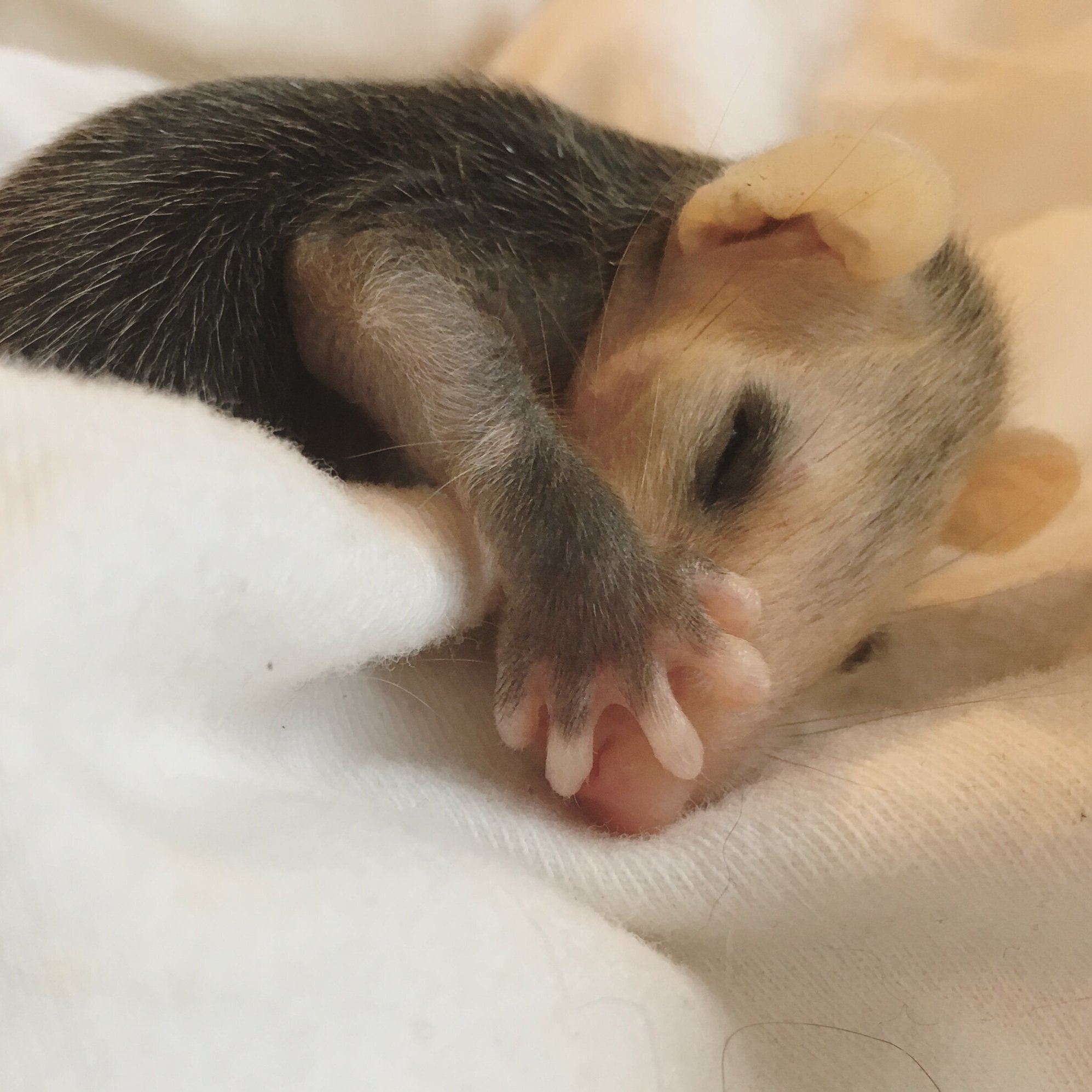
Help! I Found an Opossum!
Despite their name, Virginia Opossums are also found in Pennsylvania, and they are extremely beneficial to have around your home. Opossums are part of the natural clean-up crew that eat ticks, snakes, mice and other insects. They are well adapted to human environments, which has contributed to their success as a species for thousands of years. And contrary to popular belief, opossums are quite disease-resistant. They are also nocturnal, but it’s not uncommon to see them wandering during the day if food is scarce, and they need to forage in daylight.
Remember: It is illegal to keep and raise wildlife
Myth: Opossums are dirty and carry many diseases!
If You Find an Opossum That:
Has been in a dog or cat’s mouth
Is bleeding or has obvious injuries
Has parasites, including fly eggs (look like little grains of rice)
Is less than 8 inches long (not including its tail) and not with its mother
Has been hit by a car
Is sitting in the same spot for several hours not moving
This is an emergency. Receive immediate support here or contact your local wildlife rehabilitator.
If You Find an Opossum That:
Is unharmed and roaming during the day
Is climbing a tree or swimming
This is normal! Despite being nocturnal, opossums can sometimes roam during the day. For more solutions to common problems with opossums in human spaces, visit this page.
How To Save Baby and Juvenile Opossums
Opossum joeys are born naked, underdeveloped and are about the size of a kidney bean. Joeys crawl from their mother’s birth canal to her pouch and will latch onto one of her nipples. The nipple then enlarges inside of the joey’s throat, making detachment difficult until the joey is more developed. Joeys remain inside of their mother’s pouch on a nipple for their first seven to nine weeks.
After seven to nine weeks, the joeys will detach from the nipple, crawl out of the mother’s pouch and onto her back. Joeys are still reliant on their mother at this stage but spend much less time in her pouch.
Mother opossums typically have two litters of joeys each year — the first in spring (April-June) and the second in late Summer (July-September).
Opossums are independent by around 8 inches (or 200 grams) but can grow to reach several pounds as an adult! They grow quickly, with their lifespan in the wild only being two to three years.
Virginia Opossums need to be tube fed in rehab to mimic their natural behavior. They have sensitive digestive systems as infants but grow up to eat almost anything as adults!
If a baby opossum is found alone, this is an emergency. Opossums do not have nests or dens like other animals. If mom is no longer in the area, it is extremely unlikely that she will return for her lost joey. But once joeys reach about 8 inches long (or 200 grams), they are completely weaned from their mother’s milk and able to survive on their own. Joeys will begin to leave the safety of mom and venture on their own. Unless the juvenile is injured, there is no need to intervene once they have reached this size.
Stop and check deceased opossums on the road for babies if it is safe to do so. The most common reason that opossums become orphaned is from their mother being killed, usually by a car. Joeys often survive the impact of a car crash when inside the pouch. If you find a deceased opossum mother with joeys in her pouch, contact a wildlife rehabilitator for help. They will usually ask you to bring the adult opossum with the babies still attached so that the joeys can be safely removed from the nipples.
Check surrounding areas for babies if the joeys are old enough to have been on mom’s back instead of in her pouch. You may hear “sneezing” sounds. This is the babies calling out for each other and mom. You can use this to your advantage to find the babies.
How To Save Adult Opossums
At three months old, opossums are fully weaned and are able to survive on their own. They’re usually about 7 inches long (not including their tail).
Opossums are generally nocturnal, but it is not uncommon to see them active during the day, especially in winter. When approached by people or pets, opossums may perform their famous “playing possum” routine. The opossum may fall over, open its mouth, drool and emit other stinky smells. These are tricks to make a predator think the animal is dead and not a tasty meal. The opossum will recover and go on its way once the perceived danger is gone.
Monitor an opossum for signs of breathing and small movements if you find one that you think is deceased. An alert opossum will hide, play dead or show their teeth when approached by a person.
Call a wildlife rehabilitator if you observe an adult opossum sitting in the same spot in the open for extended periods
Contact a local wildlife rehabilitator right away if you find an injured or ill opossum. The most common injuries of opossums are from being hit by a car, attacked by pets or enduring frostbite. Opossums are slow moving and do not have great eyesight. Having ears, toes and tails not covered in fur also makes them susceptible to frostbite.
Contain an opossum by using gloves and a thick blanket to coax it into a box or crate. Live traps with food inside can also be helpful to catch opossums when rehab is necessary.
For more solutions to common problems with opossums in human spaces, visit this page.
Opossums will show their 50 teeth to scare away predators! Although they have sharp teeth, opossums rarely bite and would much rather hide from you or “play possum.”
Do you still have questions after reading the information above? Contact us or a local wildlife rehabilitator!
Have you found this FREE information helpful? Help support our work and expand our services by giving a gift.
Resources
Answering the Call of the Wild by Erin Luther. Toronto Wildlife Centre.



